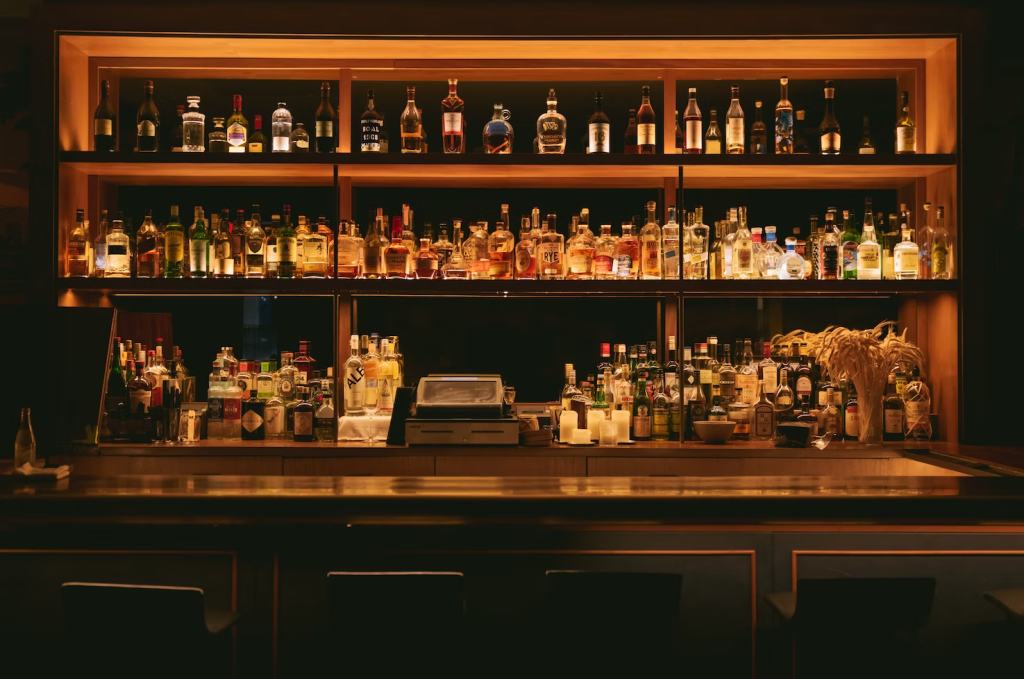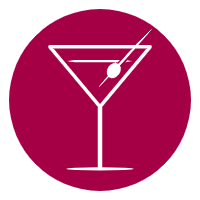It doesn’t matter if you’re starting from scratch or just want to give your existing bar a facelift; the process of equipping it may be an exciting and adventurous journey either way. Nevertheless, “How much will it cost to fit out a bar?” is a question that naturally arises for any individual who is considering owning or managing a bar.
The answer to this question may vary widely based on a variety of factors, including the size of the area, its location, the degree to which it can be customised, and the vibe that is sought within the bar.

This article will provide you with the knowledge you need to effectively plan and budget for your bar project by examining the multiple elements that influence the pricing of bar fittings. If you intend to create a bar of any kind, whether it’s a dive or a cocktail lounge, one of the first things you should do is investigate the prices of the various drinks.
How Much Does It Cost To Fit Out A Bar?
Depending on several circumstances, the price of bar fittings might range widely. Depending on its size, location, and level of customization, the cost of fitting a bar can range from around $50,000 to well over $500,000 or more. Some major contributors to the overall price tag are as follows:
- Location: The cost of your bar fit-out will be greatly influenced by where it’s located. Urban areas and prime locations typically come with higher rent and construction costs.
- Size: The size of your bar space is a major cost determinant. Larger spaces will naturally require more materials and furnishings, which can increase your expenses.
- Concept and Design: The style and theme of your bar play a significant role in costs. A basic, straightforward design will be less expensive than a high-end, custom-designed interior with unique features.
- Licensing and Permits: You’ll need to budget for permits, licenses, and inspections, which can vary depending on your location and the type of alcohol you plan to serve.
- Equipment: Essential bar equipment like taps, refrigeration, glassware, and point-of-sale systems can add up. The quality and quantity of equipment will impact costs.
- Furnishings: Tables, chairs, bar stools, and decor can vary in price depending on their quality and style.
- Bar Construction: Building the actual bar structure and installing plumbing, electrical, and lighting systems can be a significant expense.
- Kitchen and Food Service (if applicable): If you plan to serve food, this will add to your costs, including kitchen equipment and staff.
- Branding and Marketing: Promotional materials, signage, and initial marketing expenses should be considered.
- Contingency: Always have a contingency fund for unforeseen expenses, which can easily amount to 10-20% of your total budget.
Keep in mind that these are broad estimates, and your real expenses may vary. To identify and meet your unique business requirements, it is essential to establish a comprehensive business strategy and budget.
A more precise and personalised estimate can be obtained through consultation with professionals in the field of bar design and construction. Costs can also be affected by regional and national economies as well as by market trends, so it’s important to be educated and flexible throughout the fit-out process.
What Is Included In Bar Fit Out?
A bar fit-out is the process of outfitting a bar with all the fixtures, fittings, furnishings, and equipment needed to make the bar operational and aesthetically acceptable. While the particulars may change depending on the type of bar, its theme, and your budget, the following are some staples of every decent bar interior:
- Bar Structure: This is the physical bar counter where bartenders serve drinks. It includes the bar top, bar front, and any decorative elements like a bar rail.
- Bar Equipment: Essential equipment includes bar taps, drink dispensers, refrigeration units, ice makers, glassware, cocktail shakers, and utensils.
- Seating: Depending on the design and size of your bar, you may include bar stools, chairs, booths, or a combination of seating options.
- Tables: If your bar has a dining area, you’ll need tables and chairs or other dining furniture.
- Lighting: Lighting plays a crucial role in setting the ambience. This may include pendant lights, LED strips, decorative fixtures, and task lighting for the bar area.
- Décor: Interior design elements like wall coverings, artwork, wall mirrors, and decorative items that match the bar’s theme.
- Flooring: Flooring options range from hardwood to tile, depending on your design concept.
- Sound System: Speakers and audio equipment to create the right atmosphere with background music or live performances.
- Point of Sale (POS) System: A computerized system for order processing, inventory management, and customer billing.
- Storage: Shelving, cabinets, and storage space for liquor, glassware, and other bar supplies.
- Restrooms: If not included in your initial space, you may need to allocate space and budget for restrooms.
- Kitchen (if applicable): If you plan to serve food, you’ll need kitchen equipment, prep areas, and possibly a separate dining area.
- HVAC Systems: Heating, ventilation, and air conditioning systems to maintain comfortable temperatures for patrons.
- Security and Surveillance: Cameras and security systems to ensure the safety and security of your establishment.
- Branding and Signage: Exterior and interior signage to promote your bar and create a strong brand identity.
- Licensing and Permits: Budget for the necessary licenses and permits required to operate a bar legally.
- Furniture: Additional furnishings like couches, lounge seating, and outdoor furniture if you have outdoor seating.
- Staff Uniforms: Uniforms for bartenders, servers, and other staff members.
- Waste Management: Bins, disposal systems, and recycling options to manage waste responsibly.
- Initial Stock: A supply of alcohol, mixers, and other ingredients to kickstart your bar’s operations.
It’s vital to note that personalisation is key, and your specific needs will rely on your bar’s idea, target audience, and budget. The total cost of the fit-out might also be affected by the variety in quality and style of these components. Consulting with specialists in bar design and construction can help you plan and prioritise your budget wisely.
Conclusion
Many different things come into play while designing a bar’s interior, all of which work together to make the space feel warm and inviting. The specifics of what you’ll need and how much it will cost will vary greatly depending on your goals and resources, but one thing that will remain constant is the importance of meticulous planning.
Location, bar size, design concept, and desired level of customization are just a few of the things that should go into your initial business plan and budget. All of the essentials, such as the building itself, the bar’s equipment, furniture, lighting, and more, as well as the appropriate permits and initial stock, should be included in a reasonable price.
If you want to start a bar, whether it’s a dive for locals or a classy spot for cocktails, you need to know the ins and outs of a bar fit-out. Working with industry professionals, responding quickly to market shifts, and keeping a dedication to high standards are all important factors in running a successful bar. If you put in the time and effort, you can open a bar that not only serves your needs but also becomes a popular gathering place for locals.
Looking for more information? Visit bar fitouts sydney today!
